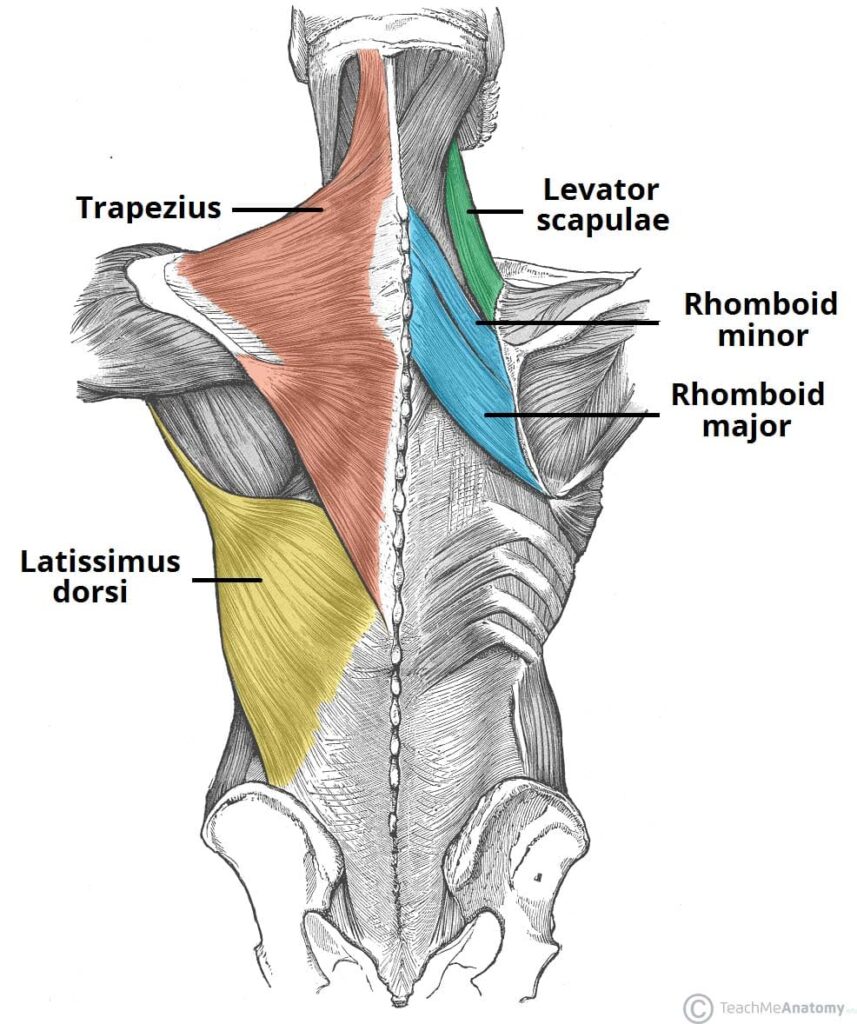There’s a common misperception that back pain is always due to injuries to the spine itself, like disc herniations, disc bulges, pinched nerves, slipped discs, and so on. But actually, the vast majority of back pain can better be described as myofascial pain. Myofascial pain is a common yet often misunderstood condition that can significantly impact daily life. Characterized by pain originating from the muscles and connective tissue (fascia), this condition can range from mild discomfort to debilitating symptoms. So what is it? And how does it happen?
What is Myofascial Pain?
The term “myofascial” combines “myo” (muscle) and “fascial” (connective tissue). Myofascial pain refers to muscle pain caused by trigger points—sensitive, tight knots, micro tears, and inflammation of muscle fibers and connective tissues around the muscles. These trigger points can cause local discomfort or even refer pain to other areas of the body.
One of the most important muscles for spinal stability and culprits in back pain is the Multifidus muscle. A muscle in the deep back, irritation there can cause the back to “seize up” or cause pain up and down the spine.
How Does Myofascial Pain Develop?
Myofascial pain often results from muscle overuse, repetitive strain, poor body mechanics , or stress. Here’s how it typically unfolds:
1. Muscle Strain or Microtrauma: Overusing or injuring a muscle can lead to small tears or strain, causing inflammation.
2. Trigger Point Formation: The affected area becomes hypersensitive, and taut muscle bands form. These are known as trigger points.
3. Referred Pain: Trigger points can cause pain in seemingly unrelated areas. For example, a trigger point in the neck may cause headaches.
4. Chronic Cycle: Without intervention, the pain can persist and cause abnormal compensation by other body structures, propagating and worsening the condition.

Common Causes of Myofascial Pain
• Repetitive Movements: Activities such as typing, manual labor, or athletic training can strain muscles over time.
• Poor Posture: Sitting or standing incorrectly for long periods can create imbalances in the muscles and fascia.
• Stress and Tension: Emotional stress often leads to muscle tightening, making them more susceptible to pain.
• Injury or Trauma: Accidents, falls, or direct impacts to muscles can trigger myofascial pain.
• Sedentary Lifestyle: Lack of movement reduces circulation, muscle strength and flexibility and increases muscle stiffness, contributing to pain.
Symptoms of Myofascial Pain
• Localized or widespread muscle pain.
• Stiffness or tightness in the affected area.
• Tenderness at specific trigger points.
• Referred pain in other parts of the body.
• Limited range of motion or muscle weakness.
Basic Treatments for Myofascial Pain
Effective treatment often requires addressing both the symptoms and the underlying causes. Here are some approaches:
1. Self-Care Techniques
• Stretching: Gentle stretching helps improve muscle flexibility and relieve tightness.
• Heat Therapy: Applying heat to the affected area can relax muscles and improve blood flow.
• Foam Rolling: Using a foam roller or massage ball can target trigger points and release tension.
2. Professional Therapies
• Physical Therapy: A therapist can guide you through exercises and techniques to restore muscle function and balance.
• Trigger Point Injections: A healthcare provider may use injections to deactivate trigger points and reduce pain.
• Massage Therapy: Deep tissue massage can address fascia restrictions and relieve trigger points.
3. Lifestyle Adjustments
• Postural Corrections: Work on improving posture to avoid strain on muscles and fascia.
• Regular Movement: Incorporate light activity, such as walking or yoga, to keep muscles flexible and strong.
• Stress Management: Practices like mindfulness, meditation, or deep breathing can reduce muscle tension.
When to Seek Medical Attention
If your myofascial pain persists or significantly affects your quality of life, consult a healthcare professional. They can help diagnose the condition, rule out other causes of pain, and help you develop a comprehensive treatment plan tailored to your needs.
Final Thoughts
Myofascial pain is manageable with the right approach. By understanding its causes and addressing the underlying factors, you can reduce discomfort and improve your overall well-being. Early intervention and consistent care are key to preventing the pain from becoming chronic.
If you’re dealing with myofascial pain, start with small steps—stretching, posture awareness, and stress management. Over time, these simple changes can make a big difference.

